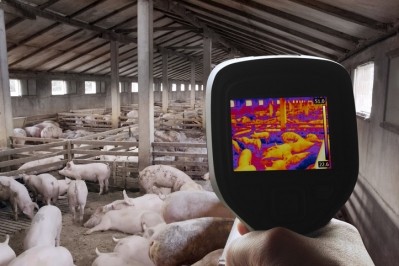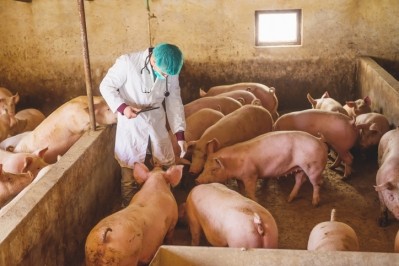USDA: China seeks to trim soybean meal use, boost alt imports

The US Department of Agriculture (USDA) released details of China’s expected production, use and trading practices with the US regarding soybeans on Monday in a Foreign Agricultural Service attaché’s report.
Overall, imports of soybeans are expected to fall in the 2018/19 marketing year (MY) and use of soybean meal is expected to stall, the attaché said.
US soybeans are anticipated to be in a “competitive price range” even with the imposed tariffs, but face additional challenges to import.
“Many importers have shared that they are unwilling to risk facing possible administrative barriers to US soybean imports at Chinese ports,” she said. “Importers are also wary of making what may be perceived in China as a political statement in deciding to purchase US soybeans during the ongoing US-China trade dispute.”
However, domestic production of soybeans in China is not expected to see large expansion, she said.
“Despite increased government subsidies to producers aimed at expanding soybean acreage, MY18/19 domestic oilseed production increased only 0.2% over the previous year, to an estimated 58.95m metric tons (MT).”
“The forecast MY18/19 oilseed production reflects a downward adjustment of soybeans and peanuts and a moderate increase of cottonseed production based on recent weather conditions and yield trends,” she added.
Consumption trends and alt feeds
China has had a consistent growth for soybean imports and the use of soybean meal in the past several years, but those trends are not anticipated to continue into MY 2018/19, the attaché said.
The continued population growth combined with economic and demographic factors often increase demand for animal proteins and could expand demand for soybean meal, she said. However, this year, other factors, including disease outbreak, use of alternative feed proteins and trade tensions with the US, are expected to offset those demand indicators.
“MY18/19 will see reduced SBM [soybean meal] demand for feed use, with a forecast MY18/19 SBM feed consumption of 66.6m MT, down 2.6m MT from the previous year. Rapeseed meal, sunflower seed meal, and fish meal feed use will see moderate increases,” the attaché said. “Taken together, the reduction in SBM feed use and slight increases in other protein meals feed use will result in an overall SBM-equivalent meal use for feed of 85.9m MT in MY18/19, a decrease of 1.7m MT compared to the previous year.”
The predicted demand for soybean crush from October through February 2019 is 40m metric tons, she said.
Some of the demand could be filled with domestically grown soybeans and sales of the oilseed from the state reserve.
The total amount of soybeans in China’s state reserve is unknown, and estimates range from 6m to 8m metric tons, she said. However, starting in June, the government has had 17 auctions of soybeans from the reserve.
“MY18/19 soybean ending stocks are forecast at 20m MT, slightly lower than the previous year based on the Chinese government’s resumption of sales from the soybean reserve and decreased soybean imports in MY18/19,” she said. “China’s total soybean stocks will likely fall significantly in the beginning of 2019, then recover when soybean imports from the South America peak in the second half of MY18/19.”
Cumulative sales of reserve soybeans had reached 1.74m metric tons by early October, she said. A predicted tight domestic supply has increased auction prices and is anticipated to increase sales at future auctions.
Soybean meal prices also have been increasing since July, said the attaché. “Industry sources estimate an average SBM price increase of between 11 and 14% in mid-October versus late September.”
“Chinese industry leaders expect stocks of imported soybeans at ports to drop to historical lows by November 2018, pushing soymeal prices ‘very high’ in the first quarter of 2019,” she said. “Feed mills reacted to the rapid SBM price increase by raising feed prices beginning in the second week of October.”
Additionally, the feed industry in China is suggesting producers use less protein in rations, she said.
“The country’s current SBM meal inclusion rate for swine is reportedly about 20%, compared to the international average of 12%."
High levels of soybean meal inclusions in feeds may have started when soybeans were a cheaper feed ingredient compared to other alternatives, the attaché said. A drop in the inclusion rate would bring feeds back in line with previous rations, however, the move also is being viewed as part of an effort to trim soybean meal use and limit the need for imports.
The China Feed Industry Association approved new feed standards for pigs and poultry production at the end of October, which reduced the lower minimum requirement for crude protein and set a maximum protein level, she said. Lower protein levels are set to be supplemented with amino acid and enzyme additives.
The standards are not mandatory, but feed mills typically have complied with the recommendations in recent years, she said. “On the same day as the CFIA announcement, 29 large feed manufacturers committed to using the new standards,” she added.
“Several prominent Chinese animal nutritionists have recently advocated changing the current basic feed mix, which is composed of just corn and SBM, to a new feed mix, containing corn, SBM, other meals, and essential amino acids,” said the attaché. “A senior animal nutritionist from China Agriculture University estimated that a 2 percent reduction in feed protein content for China’s total swine herd could reduce China’s domestic SBM use by 10.3m MT annually.”
The forecast for protein meal used in feed in 2018/19 is down 2.3m metric tons from 2017/18m she said. Total feed production is expected to be about 228m metric tons in 2018 – 203m metric tons in compound feed, 17.6m metric tons in feed concentrate and the rest in pre-mixed or other feeds.
Influence of ASF
Smaller swine herds in 2019 stemming from the outbreak of African Swine Fever (ASF) also are predicted to lower feed demand, the USDA reported. From August 3 through October 30, 53 cases of the disease in 13 provinces have been reported.
Initially cases were noted on small or medium-sized swine farms, however, larger farms with about 20,000 pigs have now been included. Inter-province pig transport has been halted in 28 provinces by the Ministry of Agriculture.
About 200,000 pigs have been culled in relation to the outbreak, however, the country previously harvested about 700m pigs annually. Short-term production is not predicted to see much effect from the disease outbreak, however, the expectation is for pork production to fall in medium and longer term.
The demand for soybean meal by the swine industry could drop by up to 1.2m metric tons in the 2018/19 marketing year.
Imports, trade and domestic sales
Overall imports in 2018/19 are anticipated to be about 85m metric tons – a drop of about 10% from the 94m metric tons imported in 2017/18, the attaché said. “This 9m MT drop in imports compares to a net soybean import growth of 8.5m MT per year during the past 4 years,” she added.
Price increases on soybeans from Brazil and Argentina mean that US soybeans remain competitive in spite of the 25% on imports, she said. However, importers are hesitant to import the feed ingredient from the US because of potential administrative barriers and the potential political statement made by buying US soybeans during a period of trade tensions.
“On October 17, JCI China, one of China’s top agricultural research and consulting firms, published a short notice on its website with the bottom line message that now is not the time to make new purchases of US soybeans,” the attaché reported. “According to the notice, the buyer of two U.S. soybean shipments that are currently en route to China said the shipments are for contracts signed in April and that, like other Chinese importers, the company has not signed any new contracts for U.S. soybeans since the end of May.”
However, the combination of efforts to reduce imports of US soybeans and the amount available from other exports could mean China’s feed industry will have few supply options for the first portion of 2018/19, she said. Brazil’s next harvest is predicted to be ready for export starting in March 2019.
“The reduction in supply options is likely to have a dampening impact on China’s livestock sector and may mean increased animal protein imports,” she said.
Additionally, there are expectations that China will turn to alternative protein meals, a practice that may see challenges from availability as some of the alternatives may not be an option until mid-2019, she said. And, on October 26, China ended the 11% value-added tax rebate for soybean meal exports – the change took effect on November 1.
“Preliminary analysis indicates that an estimated maximum of 1.9m MT SBM-equivalent of other protein ingredients could be added to meet China’s demand during the first months of MY18/19,” the attaché said. “Rapeseed imports are forecast to increase by 0.75m MT to 5.4m MT in MY18/19, with shipments expedited in the first half of the marketing year.”












